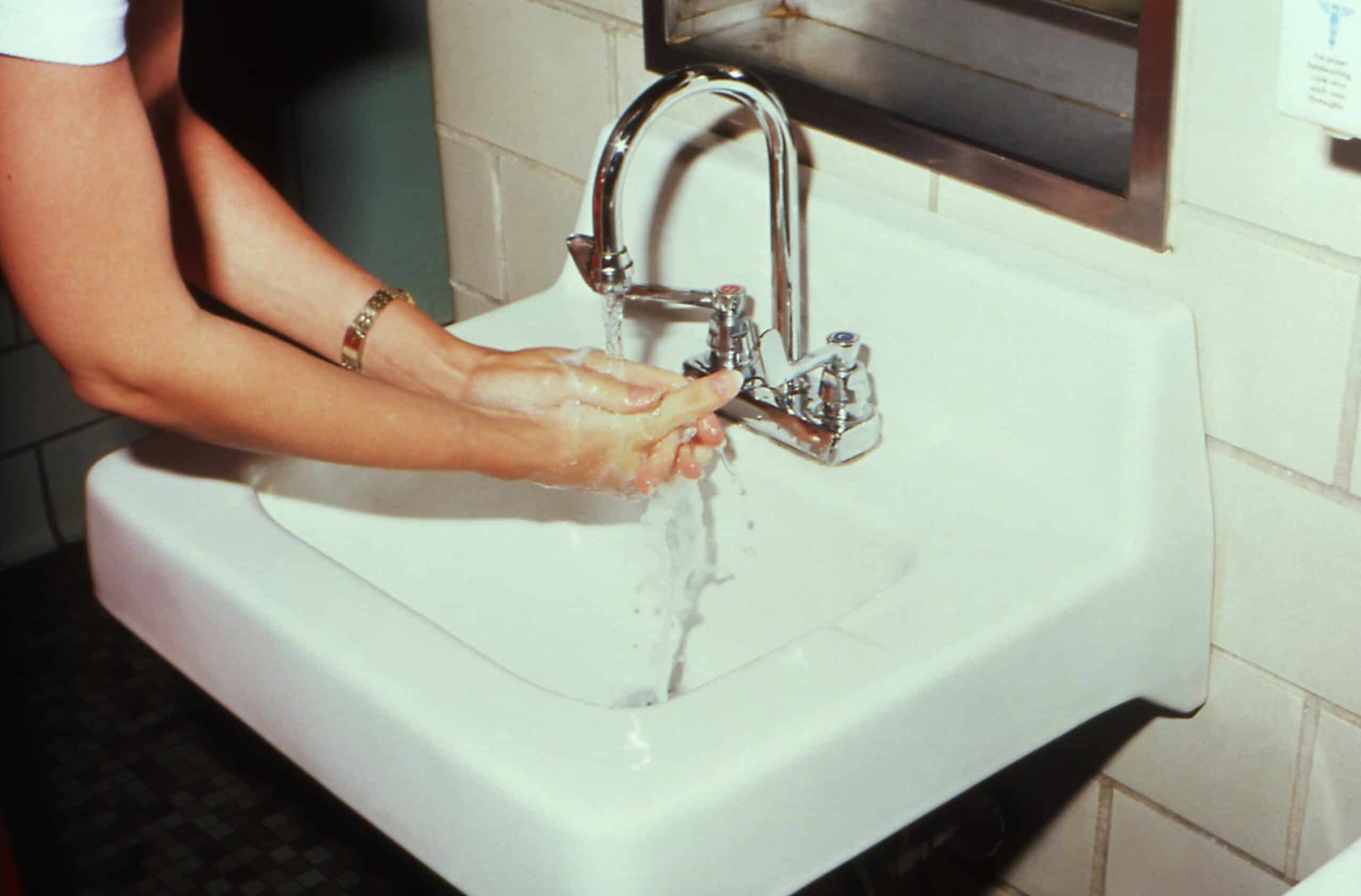Gloves are required for any do-it-yourself or home renovation job involving polyurethane. But even if you are extremely careful when applying polyurethane finishes, you will probably get some on your hands or skin. If this occurs, you should clean the polyurethane as quickly as possible, but there’s no need to worry. We have all you need to know about how to remove polyurethane from your hands. To find out how to get rid of polyurethane, continue reading.
What is Polyurethane?
The most common abbreviations for polyurethane are PU or PUR. It is a polymer that comes in several forms. It is possible to make the material flexible or rigid. This makes it possible to use polyurethanes in a variety of ways.
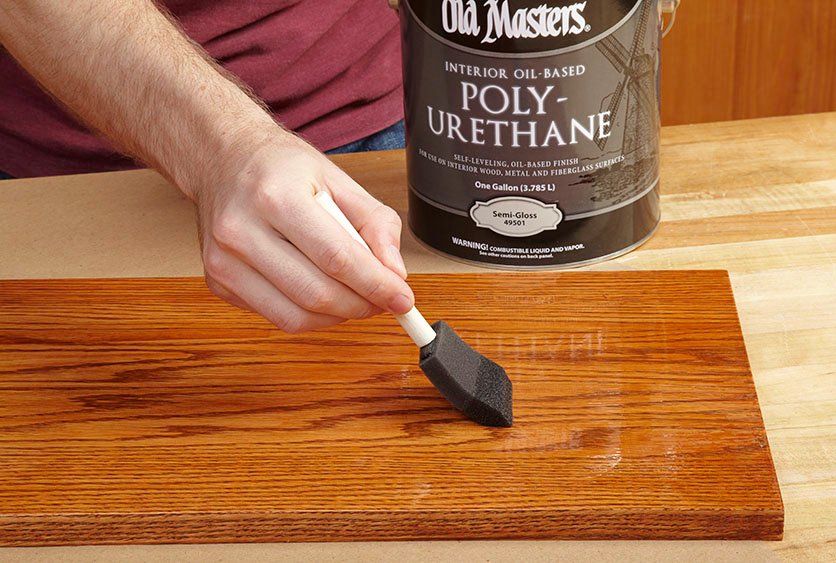
Image Source: woodmagazine.com
Polyurethane comes in two forms: oil-based and water-based polyurethane.
A wide range of consumer and industrial goods are made using the two types. To protect wooden furniture, polyurethane can be used as a wood stain. It can also be used to insulate freezers and to create adhesives, coatings, cushions, beds, and automobile parts.
Let’s examine how to remove both water-based and oil-based polyurethane from the hands now that we know what they are.
How to Get Oil-Based Polyurethane Off Hands Using Mineral Spirits
One of the best methods for getting rid of an oil-based poly is to use mineral spirits. To get the sticky polyurethane off your hands, though, you’ll need a few necessary tools. Initially, you will need to buy lotion, baby oil, vegetable oil, mineral spirits, soap, warm water, and moisturizer.
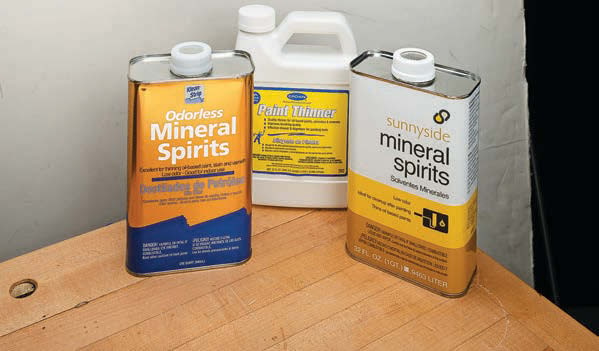
Image Source: woodsmith.com
With all the necessary materials, you can help remove the polyurethane from your hands or skin by following the easy methods listed below.
Step-1: Apply Mineral Spirits
Yes, polyurethane can be eliminated by mineral spirits. You must first locate a room that is well-ventilated and free from flame hazards. Next, you must rub your hands gently and apply adequate mineral spirit to the afflicted areas.
If you have sticky spots, you will apply more spirit, but you need to be careful because mineral spirit can have harsh chemicals harmful to your skin. You could consider using a shop rag to control the use of spirits. The spirits will soften the oil-based poly and make it easy to wash off.
Step-2: Clean Your Hands
The other step is to wash the mineral spirits off using soap and water. The mineral spirits tend to be acidic, so you will need to rinse it off using warm water and soap after a minute or so. For example, you could use lava soap or dish soap to properly remove the mineral spirits or polyurethane left on your hands. Then you will need to rinse your hands thoroughly and dry them using a soft towel. If you still have any sticky substance on your hands, you could use the mineral spirits and then wash your hands again.
Step-3: Use Moisturizing Lotion
You can use any moisturizing lotion once your hands are dry and don’t feel sticky. If your hands or skin feel a little dry, the lotion will assist.
How to Get Water-Based Polyurethane Off Hands Using Soap and Water
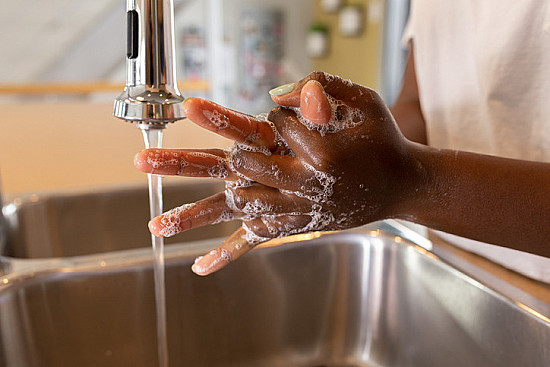
Image Source: health.harvard.edu
It is much simpler to get rid of water-based polyurethane if it gets on your hands or skin. All you’ll need for this procedure is soap and water.
Step 1: Apply Dish Soap and Water to Your Hands
In this phase, you will need to wash the afflicted regions with dish soap and a very small amount of water.
Step 2: Rub Your Hands
The second step is to rub your hands together. This will help loosen and remove polyurethane from your hands. You could also gently rub the affected areas with the tip of your nails. If you have difficulty removing polyurethane, you could soak your hands in a water and soap solution for a few minutes. If the water-based poly is still not removed, you could consider applying denatured alcohol or acetone nail polish remover.
Step 3: Rinse Off
The second step is to thoroughly rinse your hands with warm, clean water. After that, you must use a fresh, dry towel to pat your hand dry.
Step 4: Use Moisturizing Lotion
You must use a moisturizing lotion to keep your hands hydrated after you have thoroughly dried them.
Additional Methods of Getting Polyurethane Off Your Hands
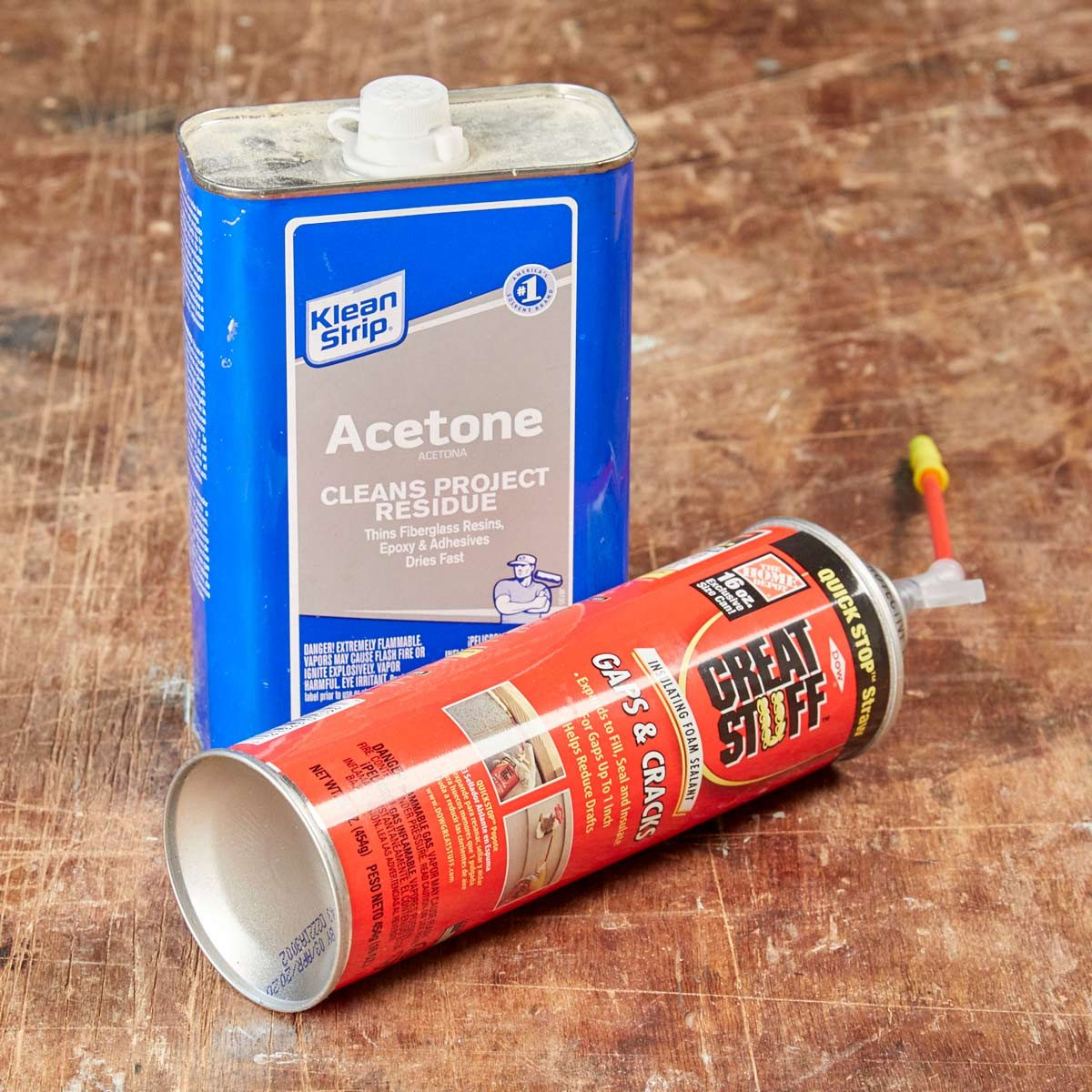
Image Source: familyhandyman.com
Although the mineral spirit and water solution are the most effective ways to get polyurethane off your hands or skin, there are a few more ways that will work as well.
1. Using Baby Oil or Vegetable Oil
Using baby oil or vegetable oil is another effective home remedy method to get polyurethane off your hands. First, rubbing baby oil or vegetable oil on the affected area will help loosen the polyurethane. Then you will need to wash your hands with warm water and liquid dish soap, then dry and moisturize them.
2. Using Peanut Butter
Another effective method is using peanut butter. You simply apply the peanut butter on the skin, rub it well and wash it off the peanut butter using warm water and liquid dish soap. Then dry and moisturize your hands.
3. Using Olive Oil and Salt
Polyurethane can also be eliminated using salt and olive oil. Applying olive oil on your hands is similar to applying peanut butter, and they scrape and remove polyurethane with salt. After cleaning and drying, apply hand lotion.
4. Using Paint Thinners (Best for Oil Based Polyurethane)
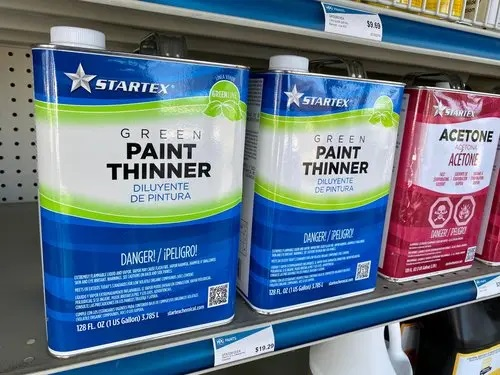
Image Source: thecleverhomeowner.com
Will a paint thinner remove polyurethane? Yes, using a paint thinner is another effective way to clean polyurethane. This method works best on oil-based poly. One of the most effective thinners is the WD-40 paint thinner. The paint thinner will loosen the poly, and then you will need to clean up your hand with water and soap. Then dry and use a moisturizer since your hand may dry out from excessive washing.
5. Soy-Based Stripper
Using a soy-based polyurethane stripper is another great option to get the job done. The best bit about this method is that it is bioactive, making it great to use on the skin. However, you will still need to wash it off and moisturize your hands.
6. Alcohol
Does denatured alcohol remove polyurethane? Rubbing denatured or isopropyl alcohol will definitely help lift to remove polyurethane. Rubbing alcohol will help break down the harsh chemicals in the polyurethane stuck on your skin or hands. However, rubbing alcohol can be hard on your skin, and you should clean it off thoroughly. Also, note that you need to use it in a well-ventilated space to prevent respiratory problems.
7. Nail Polish Remover
Using polish remover is the other effective method that you could use. The polish remover contains acetone as an active ingredient. The acetone effectively breaks down polyurethane bonds though the product is mainly used for fingernail polish remover. Nevertheless, acetone can be tough on human skin, just like rubbing alcohol, and you should clean it off thoroughly. Also, remember to use the polish remover in a well-ventilated area.
8. White Vinegar
White vinegar is another ideal technique that will work; it will help soften or liquefy the polyurethane, making it easier to remove.
9. Using a Hand Cleaner
You can also use a hand cleaner, but keep in mind that hand cleaners and waterless cleaners only work on fresh or wet polyurethane, so they won’t work on dried polyurethane. It would also be helpful to wash your hands after using the products.
Tips for Using and Removing Polyurethane
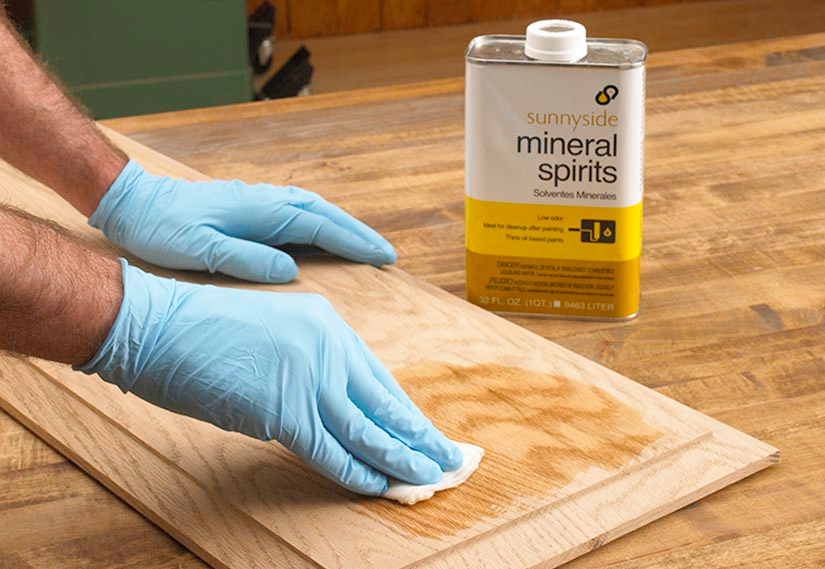
Image Source: woodmagazine.com
1. The first tip is wearing gloves. You can get nitrile, latex, or chemical-resistant gloves and use them each time you apply polyurethane.
2. When applying polyurethane glue, apply it from a container and away from your body. Also, ensure you use the best brush for polyurethane.
3. If the poly spills on your clothes or shoes, you should clean them up before drying on your fabric. It will be wise if you change your clothes immediately and clean them.
4. Work in a well-ventilated area. So it would help if you worked with exhaust fans or opening windows.
5. Always store the polyurethane in a sealed container when not in use.
6. It is important to have mineral spirits or paint thinner with you each time working with polyurethane. This way, it will be easy when you are removing polyurethane from the brush or your hands.
Frequently Asked Questions on How to Get Polyurethane Off Hands
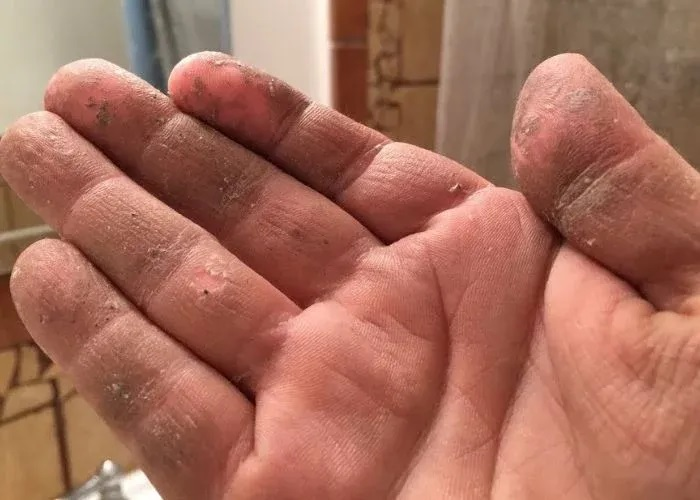
Image Source: woodworkingclarity.com
1. What removes dried polyurethane from hands?
Soak your hands in acetone or mineral spirits to get rid of dried polyurethane. Additionally, you can use substitutes like baby oil, vegetable oil, and strippers made from soy. To make the poly leftovers easier to remove, use any of these items on the dry polyurethane.
2. What dissolves oil-based polyurethane?
Oil-based polyurethane is much more viscous than water-based polyurethane because it contains a large quantity of VOC (Volatile Organic Compounds.) Therefore it is harder to remove and will require appropriate solvents such as lacquer thinner, mineral spirits, and acetone to remove
3. What is the best solvent to remove polyurethane?
Polyurethane is one of the most challenging adhesives to remove using conventional techniques due to its characteristics. But for removal to be successful, the right cleaning supplies must be used. Acetone is a chemical solvent that can help dissolve polyurethane glue and simplify removal.
4. Can paint thinner remove polyurethane off hands?
Yes. Paint thinner removes oil-based polyurethane from hands and other body parts. This petroleum distillate quickly breaks down the polyurethane allowing it to be wiped or washed off.
5. What home remedy can remove polyurethane from hands?
You can use olive oil and vinegar to remove poly from your hands. But if you don’t have these, you can opt for nail polish remover and peanut butter. Also, regular household items such as dishwashing soap and baby oil can help in removing poly from your hands.
6. How can you wash off poly caulk from your hands?
Apply thinning agents, such as acetone, to your hands and then wipe them with a cotton ball or a cloth soaked in the thinner until the caulk is gone.
7. Is Polyurethane safe on the skin?
The chemicals in polyurethane are normally safe for contact with the skin, but in some cases, they may cause allergic reactions and dermatitis in some people. The symptoms of a reaction include skin rash, itching, and abrasions. Another common reaction is irritation of the eyes and throat. People with these allergic reactions should always take precautions when using polyurethane.
8. How do I get polyurethane off my hands without mineral spirits?
To remove poly from your hands, you can use any of the common home products listed below, which we have already discussed, in place of mineral spirits.
The alternatives include
-
- Vegetable or baby oil
-
- Peanut butter
-
- Denatured or rubbing alcohol
-
- Hand cleaner
-
- Acetone
-
- Warm water and dish soap
-
- White vinegar
-
- Olive oil and salt
-
- Paint thinners
-
- Soy-based polyurethane stripper, which is bioactive and gentle on the skin.
Conclusion on How to Get Polyurethane Off Hands
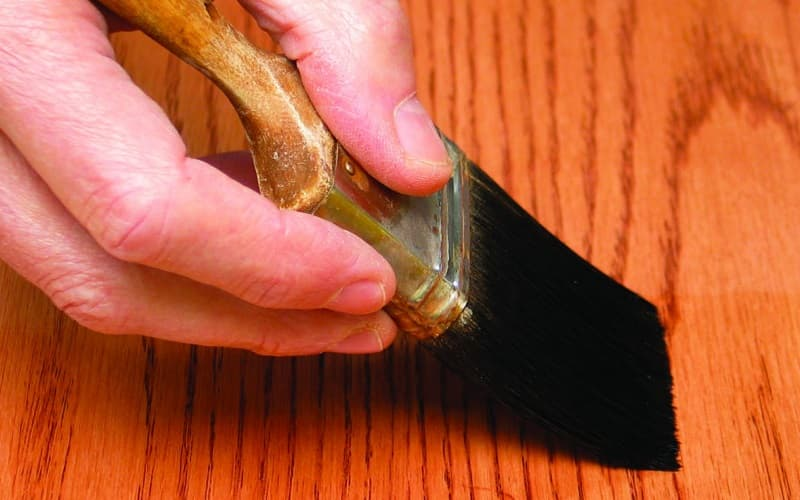
Image Source: paintandroller.com
Now that we know how to remove polyurethane from hands and skin, we can use mineral spirits or paint thinners to remove oil-based poly as well as soap and water for water-based poly. You also need to wear protective gloves, like rubber ones, to keep polyurethane off your hands and skin.
Remember, after using any of the methods listed in this article, you must rinse your hands thoroughly using warm water. Also, remember to protect your hands from dryness or irritation using a moisturizing lotion.
